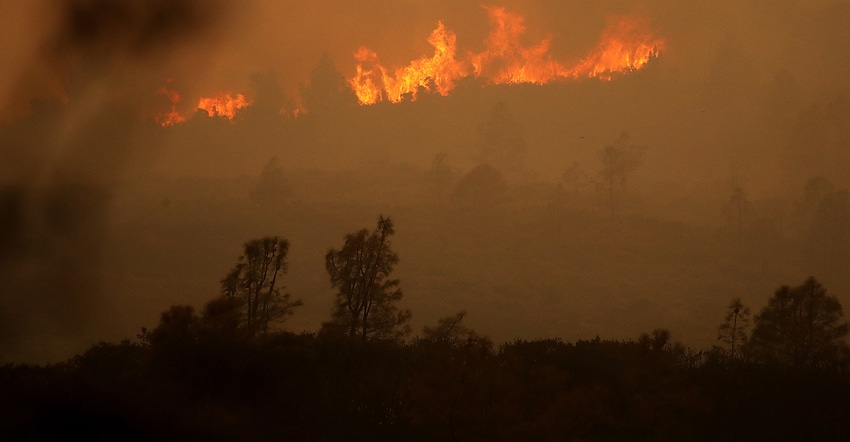August 22, 2018

Urban media outlets have ramped up their insistent cries that the recent spate of wildfires is proof positive of global climate change. Meanwhile, those of us living in smoke-filled Western valleys know that real, on-the-ground actions can be taken to address the more relevant causes behind this summer’s inferno.
Today, on average 7 million to 8 million acres of forests and grasslands burn annually, double the figure from three decades ago. In 2017, wildfires burned more than 500,000 acres in California, double the area burned in 2016. The Thomas fire that burned swaths of Southern California last year was the largest fire in the state’s history. Less than one year later, that record has already been broken by the Mendocino Complex fire, which has scorched more than 300,000 acres in three counties. The national cost of wildfire suppression surpassed $2.4 billion last year, another record that will likely fall.
Today’s wildfires are often larger and more catastrophic than in the past. Sure, some of the blame can be attributed to climatic conditions, like reduced snowpack in alpine forests, prolonged droughts and longer fire seasons. Western population growth has also played a role, since we now have more homes within or adjacent to forests and grasslands. However, decades of fire suppression and inability to manage our forests through controlled burns, thinning, and pest and insect control probably play an even bigger role. Where California now has about 100 trees per acre, it once had about 40 trees per acre.
An agreement on tree trimming
The Western wildfire disasters have underscored the importance of improving on-the-ground management that can lead to improved forest health. These actions can work. Even in left-leaning Ashland, Ore., residents who would typically not support removing trees engaged in a robust community dialogue, which has now led to a huge tree-thinning effort.
In the face of strong evidence, reasonable people can agree and realize the importance of thinning to protect our forests.
The farm bill passed by the House of Representatives earlier this summer would facilitate projects that thin trees and reduce the fire threat across our national forests. The bill would streamline cumbersome regulations that currently trip up important preventative activities, like addressing insect and disease infestation and reducing hazardous fuel loads.
These changes would also help to expedite salvage operations in response to catastrophic events, remove hazardous trees and salvage timber. This would better protect public safety, water supply and public infrastructure.
A massive wildfire in the headwaters of a Western watershed can devastate the water supply so important to the many beneficial uses in that river basin. This includes the irrigation of farms and ranches that produce some of our nation’s high-quality food and fiber. The procedural changes proposed in the House farm bill would improve and better protect our valuable water supplies from the devastating effects of wildfire, allow agencies to improve habitat and restore ecosystems, and allow continued agricultural use of our public lands.
You can help by calling your congressional representatives and express your support for the House farm bill forestry title.
Keppen is executive director of the Family Farm Alliance.
About the Author(s)
You May Also Like




